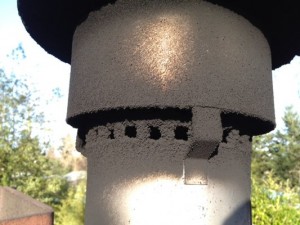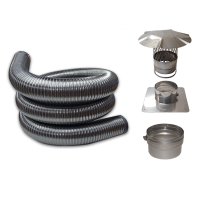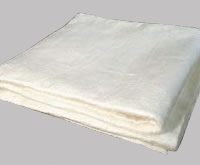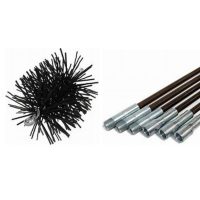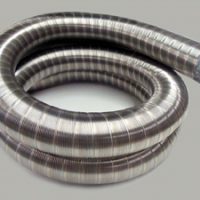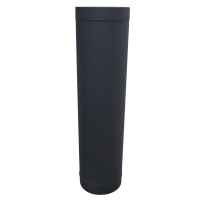Cleaning an oil Furnace Chimney
We will talk about what to look for in an oil furnace chimney and a gas burning furnace. First, an oil burning furnace. Oil soot is the incomplete by product of the combustion of fuel. It is the unburned carbon and sulfur which accumulates on the flue liners. This oil soot is why your chimney should be inspected and cleaned annually by a chimney professional.
A Gas burning furnace does not leave a black residue as does the oil furnace. It leaves a white crystal like residue. So it may appear to the untrained eye that it does not need cleaned or inspected. Maybe with the gas or oil chimney you can see up the chimney with a mirror and see light. But you are only seeing if the chimney is blocked or not. The chimney may be extremely deteriorated and you may not even know it. The terra cotta flues were originally designed to handle the exhaust with coal, and they still work great with coal. They are not designed to handle the high efficient furnaces we have today. So even if you do not think your chimney needs cleaned, your chimney may be falling apart from the inside out.
When should I clean an oil furnace chimney?
The best time to clean an oil furnace chimney should be done after the heating season such as spring time or right before the heating season begins. A lot of homeowners are unaware of chimney problems. Most find out after the chimney clogs or the interior of the clay liner or brick has cracked or collapsed. It is usually too late for routine cleaning.
One of the biggest misconceptions by a homeowner is the belief that the oil service company takes care of the oil furnace chimney. They may clean out the venting system such as the connector pipes, or even clean out the base of the chimney, but will not clean the chimney itself or inspect it. Just as a chimney sweep will not clean your furnace
What if I have found problems?
The chimney should be inspected by qualified technicians and a thorough examination of the external structure should also be done to look for signs of deterioration and weaknesses. Staining due to flue gas seeping through the chimney walls may be visible. Broken bricks or crumbling mortar joints are signs for repair. Chimneys start deteriorating from the inside out, so once you see damage to the outside of the chimney your chances of needing a new chimney liner are very high.
The chimney should be cleaned to remove any soot or creosote that might be present. Check to be sure a chimney cap is there and in good condition. The condition of the appliance pipes by a visual check should also be done. To make sure your family is safe, clean the oil furnace chimney annually.

